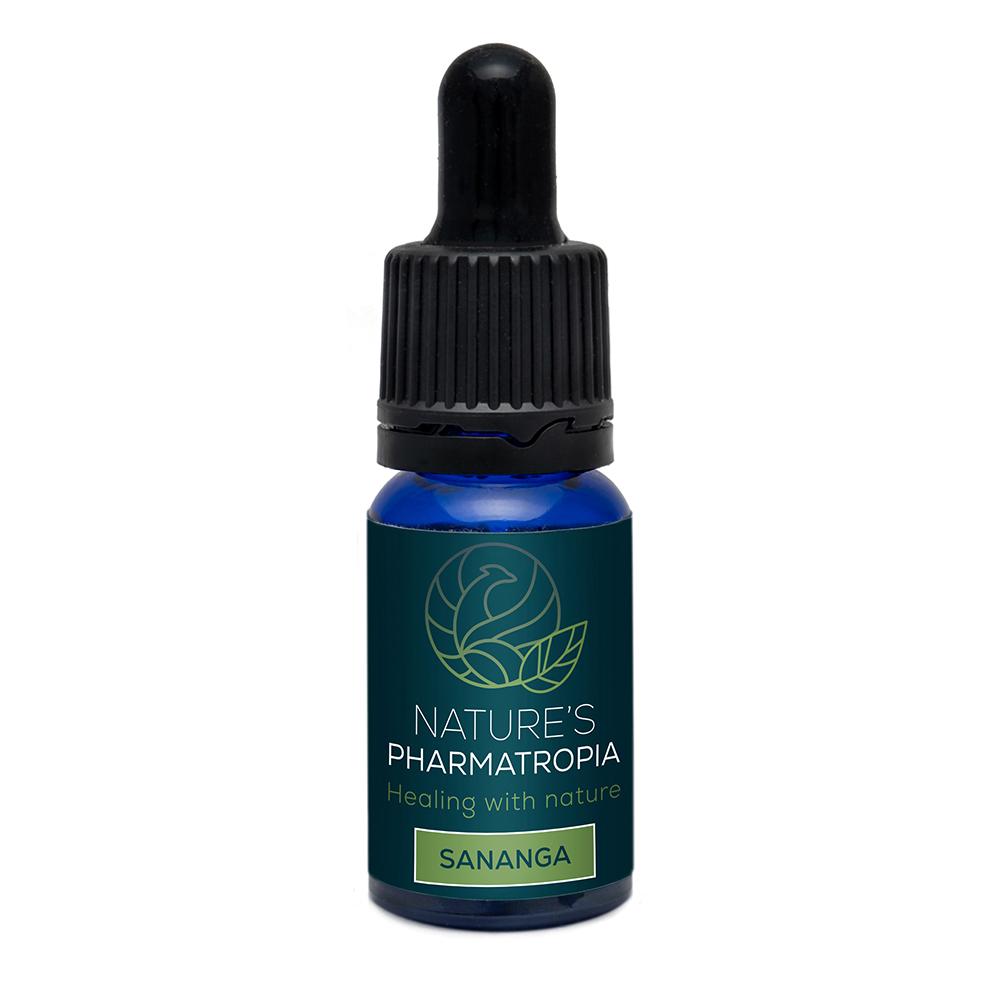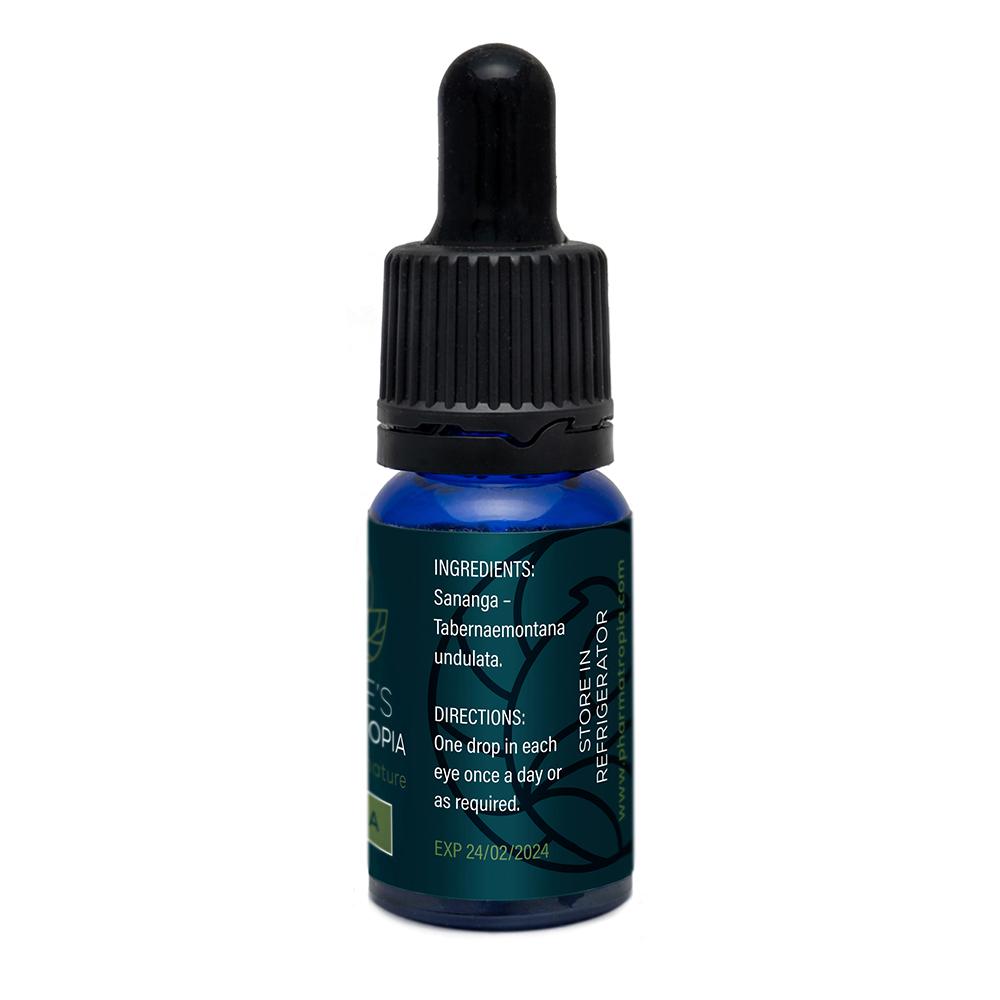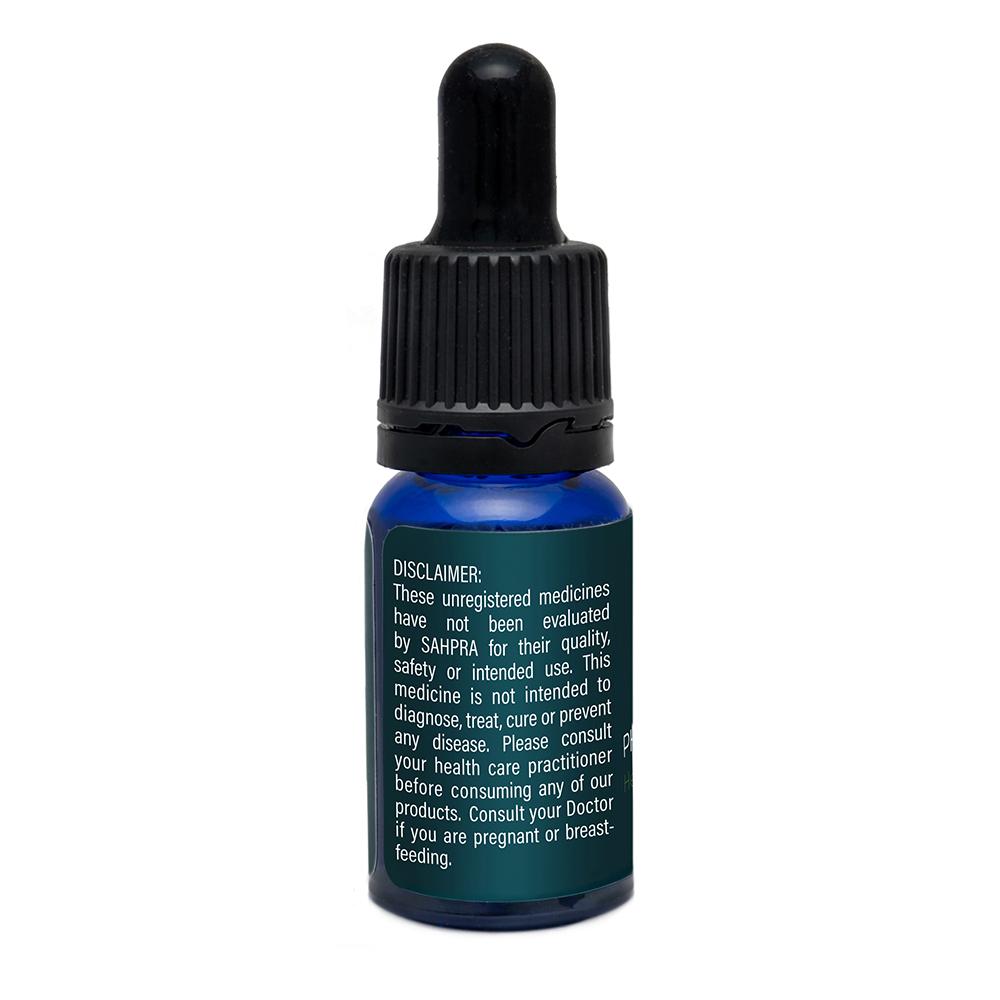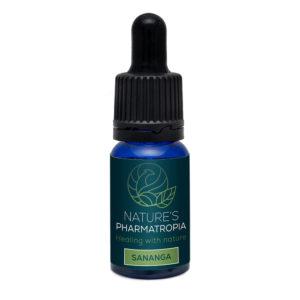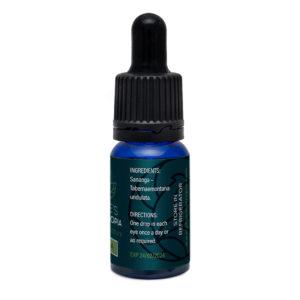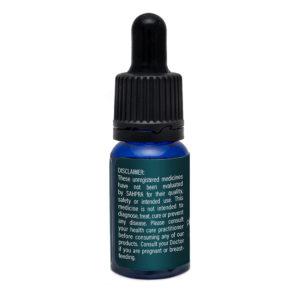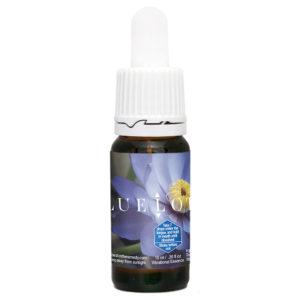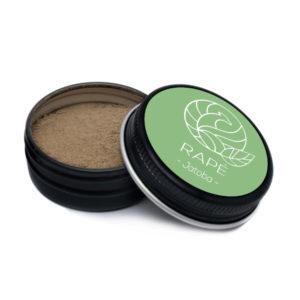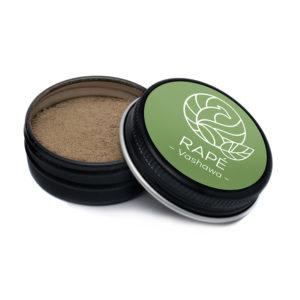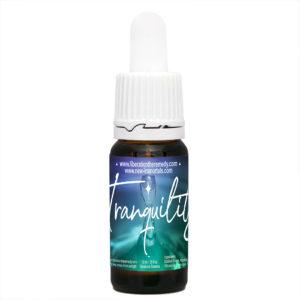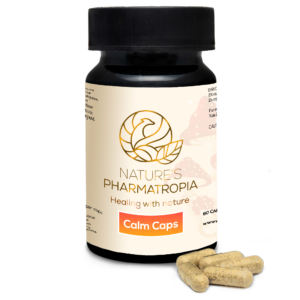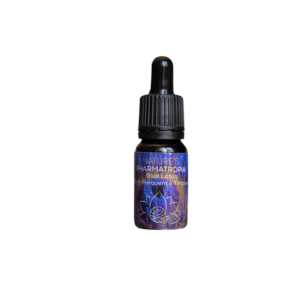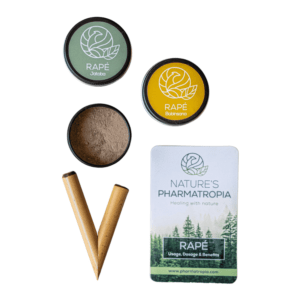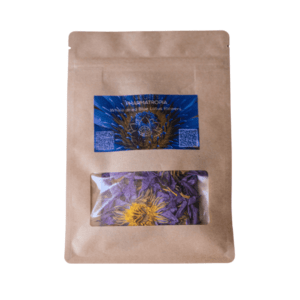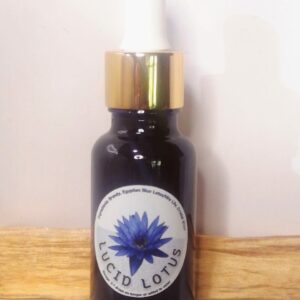NB – PLEASE INDICATE IN THE NOTES AT CHECKOUT IF YOU ARE A FIRST TIME USER
The term ‘sananga’ refers to a variety of traditional eyedrops utilized by certain Amazonian cultures. Amazonian peoples such as the Matsés, Huni Kuin, Yawanawá, and Ticuna use eye drops for their extensive healing properties and as a means of spiritual exploration.
Among the reported benefits of sananga are the treatment of eye conditions and the enhancement of hunting vision. In some instances, it is used as an all-purpose remedy to treat a variety of aches and diseases.
There are two primary types of sananga: one uses the root bark of the Tabernaemontana sananho shrub, while the other uses the root bark of the Tabernaemontana undulata shrub. Both plants have beautiful flowers that resemble windmills. The two types of sananga are typically distinguished as follows: sananga made from T. undulata is known by the Huni Kuin as mana heins and the Matsés as bechette.
Spiritual Applications of Sananga
Taking sananga can be extremely painful, but this intense stinging in the eyes is a result of the substance’s spiritual benefits. The pain indicates that the plant’s spirit has entered your body and spread throughout your veins. The spirit of sananga can then remove negative or melancholy energies (called panema) from your body.[1]
Sananga’s spiritual and physical purification can be used in preparation for other plant medicines, and it is a gentler purge than substances such as kambo. Its visual effects can also be utilized to enhance the visual experiences of psychoactive plant medicines.
According to some, it is an excellent companion to ayahuasca, purifying the spirit prior to the ayahuasca’s powerful purge and enhancing the visionary experience of an eight-hour ayahuasca ceremony.
Enhancing Visual Acuity through Sananga
Traditionally, hunters use sananga to enhance their vision prior to a hunt. It is believed that the eye drops not only help them spot prey in the forest, but also allow them to hear more clearly and strike with more force. It is said that the increased strength hunters experience after consuming sananga can last for several days.[1] Sananga is also belived to work by removing fear on all levels and brings in a calmness to the nervous system.
Westerners also report that Sananga can temporarily improve vision, describing sharper vision, enhanced color perception, and a greater tolerance for bright light.
Although there is no scientific research on the effects of sananga on visual acuity, its traditional use for this purpose is well-established, and Westerners frequently comment on its efficacy.
Medicinal Properties
Sananga is traditionally employed as a sort of panacea. It has been used to treat wounds, illnesses, and diseases of all types.[1] In addition to sananga eye drops, plants in the Apocynaceae family are used throughout the Amazon for a variety of medicinal applications and preparations.
It is believed that Sananga contains a large number of alkaloids, but there have been no exhaustive studies to determine the chemical composition of either T. or S. undulata or T. sananho.
Sananga for Eye Disorders
Sananga has been used traditionally to treat eye conditions or eye-related pains such as headaches for centuries. Although there is limited scientific research on T. undulata or T. There has been some research on other Tabernaemontana subfamily plants besides sananho…
Several studies have demonstrated that Tabernaemontana plants are effective against certain species of bacteria and fungi, suggesting that sananga could potentially be used to treat eye infections.[2-6] However, we do not yet know what concentration of these plants would have a significant impact on an eye infection.
Some eye disorders, such as cataracts, are partially caused by inflammation. Several Tabernaemontana plants (including T. sananho) have been shown to reduce inflammation in mouse models of paw injury, and in molecular tests they can decrease levels of inflammatory compounds and have antioxidant effects.
There is no evidence that sananga can treat more serious eye conditions such as glaucoma or traumatic eye injuries. Using sananga for these purposes could be dangerous.
How to Use Sananga
To preserve its potency, Sananga should be refrigerated. When you are prepared to use sananga, you should do so with care and reverence.
Prepare yourself and your environment, and set an objective. Ensure that you are in a place that is familiar, comfortable, and distraction-free. Prepare a large bowl of water for rinsing your eyes if the irritation becomes too intense.
Close your eyes and lie back on the ground. Place one drop of sananga on the inside corner of the nose, where it meets the eye, on each side. This will enable you to open both eyes simultaneously and receive equal amounts of sananga in each. Alternately, enlist the assistance of a friend to simultaneously administer one drop to each eye.
To evenly distribute the sananga, blink your eyes a few times. Try to remain present in your body while inhaling through the discomfort, knowing that the experience will pass. When the initial wave has passed, open your eyes as big as you can for as long as you can and then close again, this is to allow further distribution of the medicine into the eye. Keep in mind that the pain is essential for allowing the sananga to heal and removing negative energies from the body. Sananga teaches surrender and surrendering into the experience with breathing is recommended. The immediate stinging may last between 3 and 10 minutes; if it becomes unbearable, rinse your eyes with water.
Do not use sananga while wearing contact lenses, and refrain from wearing contacts for at least 24 hours after using sananga. Consult your doctor before taking sananga if you are taking any type of eye medication or if you have a severe eye injury or open wounds around your eyes.
We do not know the long-term effects of regular sananga dosing, despite the fact that regular dosing may be beneficial for some individuals. Stop taking sananga if you notice changes in your vision or persistent pain or redness in your eyes.
References
[1] Shepard, Glenn (1999). Pharmacognosy and the Senses in Two Amazonian Societies. PhD Dissertation, University of California, Berkeley, Medical Anthropology Program. p102.
[2] Sathishkumar et al (2012). In vitro antibacterial and antifungal activities of Tabernaemontana heyneana Wall leaves. Journal of Applied Pharmaceutical Science 2(8), p107-111
[3] Marathe et al (2013). In vitro antibacterial activity of Tabernaemontana alternifolia (Roxb) stem bark aqueous extracts against clinical isolates of methicillin resistant Staphylococcus aureus. Annals of Clinical Microbiology and Antimicrobials 12(26), p1-8
[4] Van Beek et al (1984). Antimicrobially active alkaloids from Tabernaemontana pachysiphon. Phytochemistry 23(8), p1771–1778
[5] Suffredini et al (2002). Antibacterial activity of Apocynaceae extracts and MIC of Tabernaemontana angulata stem organic extract. Braz J Pharm Sci 38(1), p89–94
[6] Shrikanth et al (2014). Antimicrobial and antioxidant activity of methanolic root extract of tabernaemontana alternifolia. International Journal of Pharmacy and Pharmaceutical Sciences 7(1), p66-69
[7] Thambi et al (2006). Antioxidant and antiinflammatory activities of the flowers of Tabernaemontana coronaria. Indian Journal of Pharmaceutical Sciences 68(3), p352-355
[8] Taesotikul et al (2003). Anti-inflammatory, antipyretic and antinociceptive activities of Tabernaemontana pandacaqui Poir. J Ethnopharmacol 84, p31–35
[9] De las Heras et al (1998). Antiinflammatory and antioxidant activity of plants used in traditional medicine in Ecuador. Journal of Ethnopharmacology 61, p161-166
[10] Nicola et al (2013). Chemical Constituents Antioxidant and Anticholinesterasic Activity of Tabernaemontana catharinensis. The Scientific World Journal, DOI:10.1155/2013/519858
[11] Rumzhum et al (2012). Antioxidant and cytotoxic potential of methanol extract of Tabernaemontana divaricata leaves. International Current Pharmaceutical Journal 1(2), p27-31
| Weight | 0.8 kg |
|---|---|
| Dimensions | 5 × 3 × 4 cm |
| STRENGTH | MILD/STRONG (good for first time users), STRONG, EXTRA STRONG (not ideal for first time users) |
| QUANTITY | 5ml, 10ml |
Related products
R250.00 – R500.00

